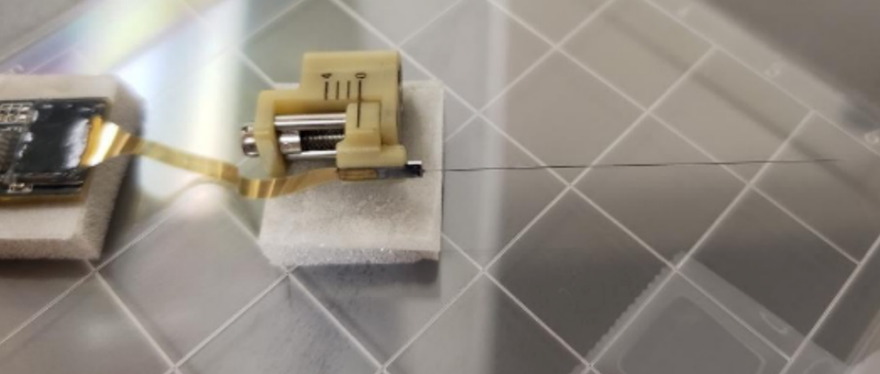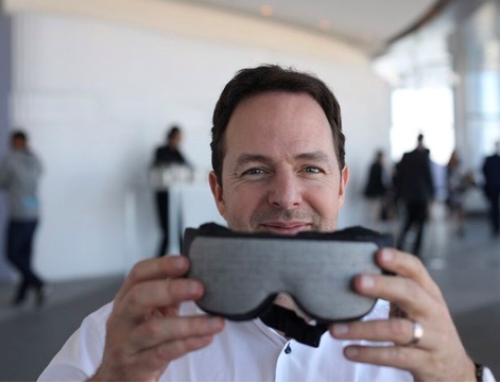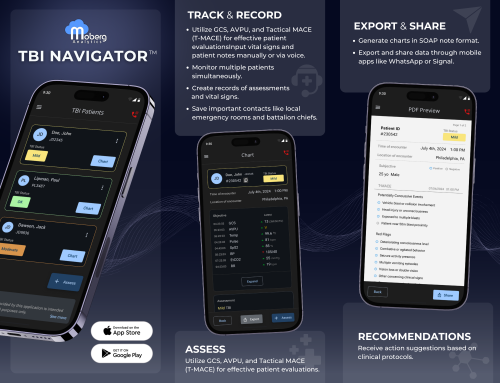The goal of visual prostheses is to restore or partially restore vision to blind patients so that they can regain some form of autonomy. A critical step towards realization of this goal is the development of a brain-machine interface. In response, Scientific & Biomedical Microsystems (SBM) is developing a brain-machine interface called InSight. SBM’s goal is to produce experimentally-verifiable percepts of vision in a non-human primate model, with the eventual goal of creating a CNS (central nervous system) visual neuroprosthesis (or “artificial vision system”) for humans.
InSight is a miniaturized, implantable micro-fabricated electrode array capable of reaching deep brain structures. The InSight electrode array allows for targeting of specific deep brain structures, such as the lateral geniculate nucleus, in large animals to allow single neuron recording and stimulation while minimizing tissue damage. Over the past year, the team has continued to optimize the design and fabrication of their InSight probes, including increasing the number of recording sites eight-fold without increasing probe size. The InSight probe is mounted on an adjustable microdrive that allows precise placement during surgery as well as small post-surgical adjustments to the electrode depth during the lifetime of the visual neuroprosthesis. Two publications in the Annual Review of Visual Science and Frontiers in Neuroscience outline some of the team’s related engineering work.
Recently, the InSight system was used in several in vivo experiments which demonstrated simultaneous recording and stimulation of closely spaced target regions of the primary visual cortex and lateral geniculate nucleus in both small animal models (rats) and large animal models (pigs). Additionally, probes were successfully implanted in other deep brain structures (hippocampus, retrosplenial cortex) in pigs and macaques. Histology was carried out in a select number of these animals, with no evidence of adverse side effects due to chronic recording and stimulation. Future work will focus on ongoing studies of the InSight system in trained non-human primate test subjects. The InSight project is led by SBM Senior Scientist, Dr. Brian Jamieson.
This project is funded through MTEC’s Brain Machine Interface Request for Project Proposals (Solicitation #16-02-Brain Machine Interface) sponsored by the U.S. Army Medical Research & Development Command (USAMRDC). The project teams funded through these awards are focusing their activities on providing a prototype visual prosthesis for human testing that provides patients the ability to navigate for ambulation, identify faces and objects critical to daily life, and read large print.
About Scientific & Biomedical Microsystems:
Scientific & Biomedical Microsystems (SBM) works with start-ups, large companies, government agencies, and private foundations to develop novel solutions to challenging problems in a broad range of markets. SBM specializes in complex, technically-challenging and multidisciplinary projects with a focus on miniature, low power systems, MEMs and sensors. They provide solutions and services in electrical and mechanical engineering, instrumentation and sensor integration, program and project development, technology development and commercialization, and contract research and development.






